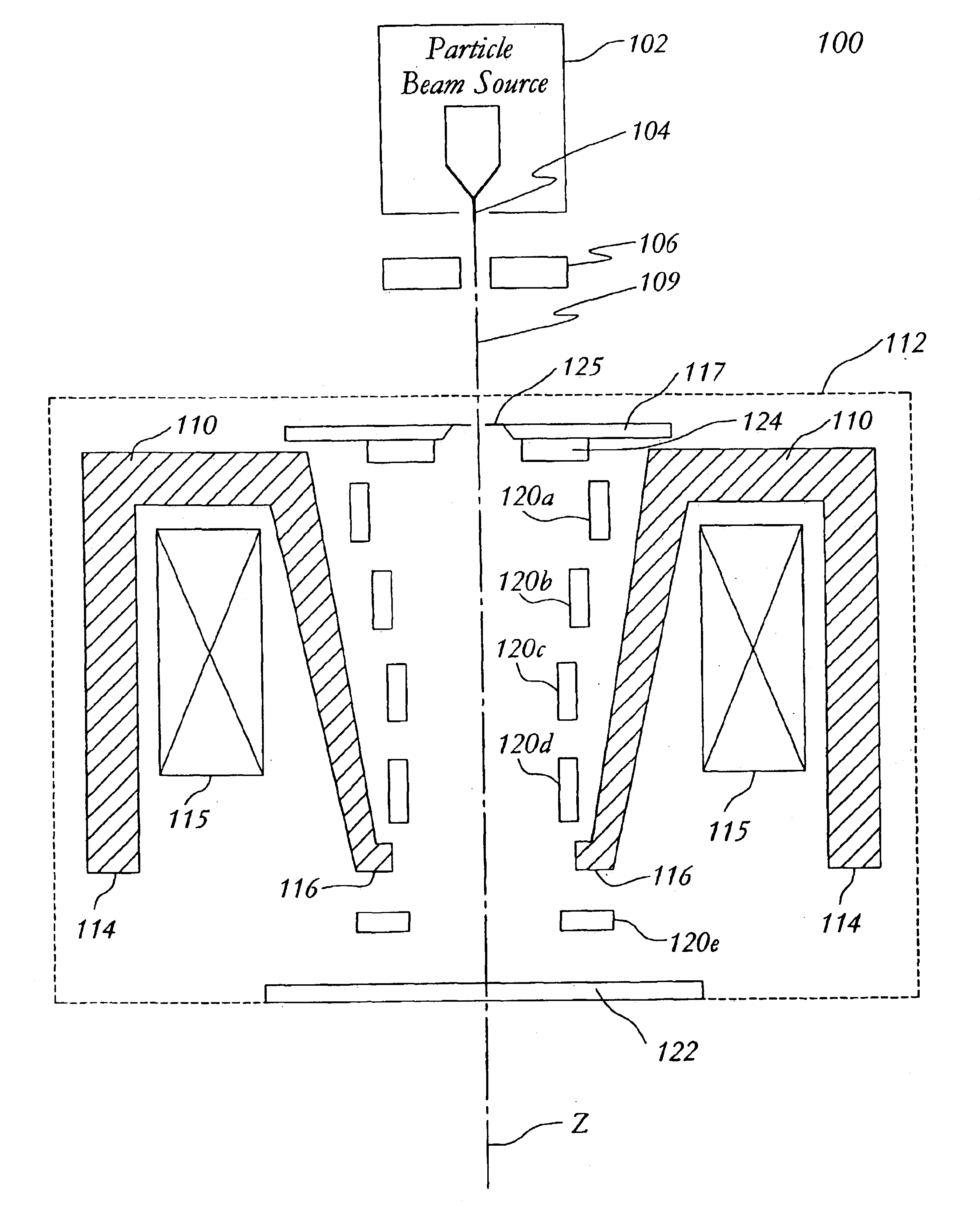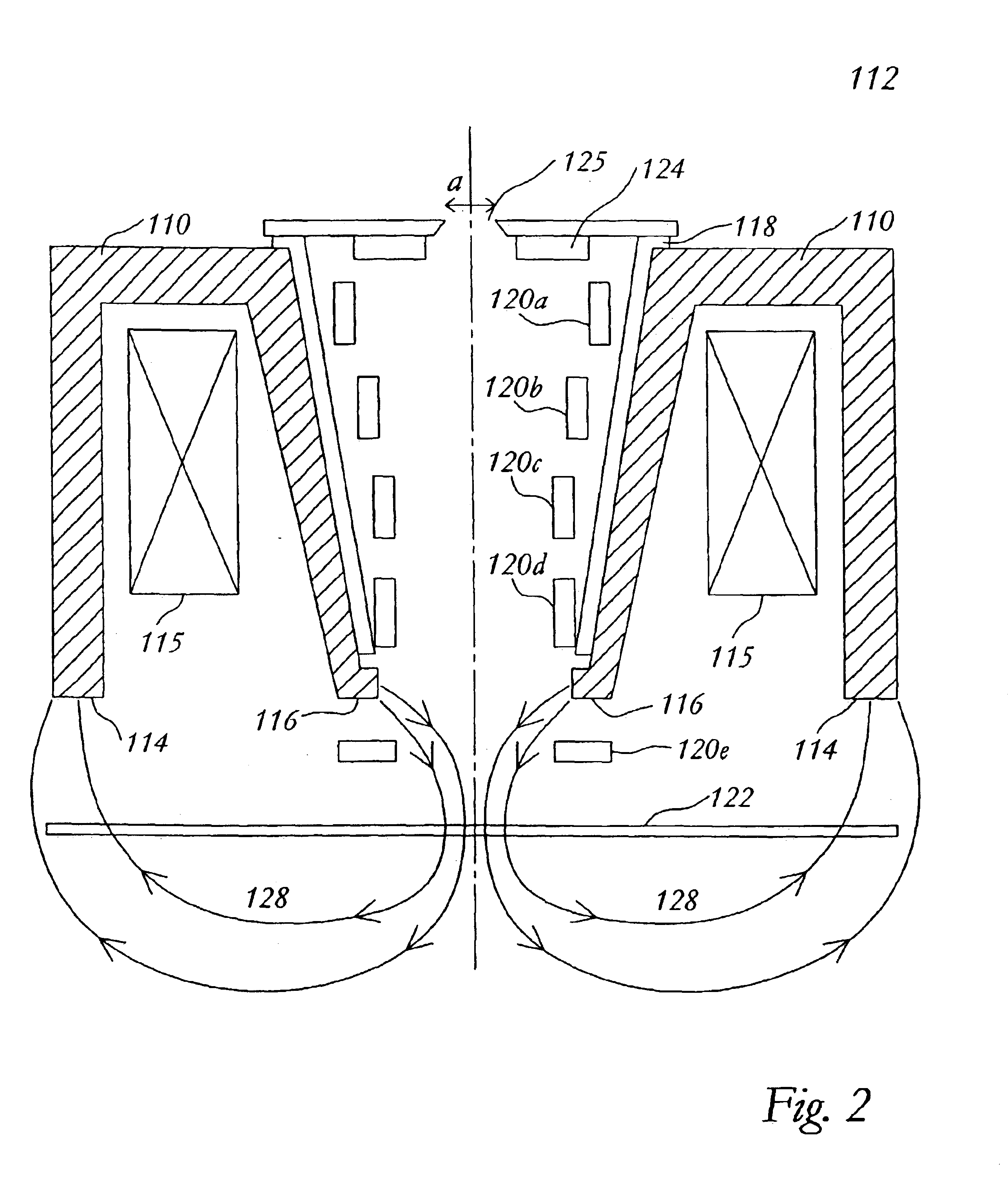Swinging objective retarding immersion lens electron optics focusing, deflection and signal collection system and method
a technology of electron optics and immersion lens, which is applied in the field of scanning electron microscope, can solve the problems of limiting spatial resolution, disc confusion, and reliability problems in the engineering, manufacturing and production of integrated circuits, and achieves the effects of reducing specimen damage, high resolution, and large deflection field
- Summary
- Abstract
- Description
- Claims
- Application Information
AI Technical Summary
Benefits of technology
Problems solved by technology
Method used
Image
Examples
Embodiment Construction
[0024]FIG. 1 illustrates an embodiment of a scanning electron microscope 100 in accordance with the present invention. In this embodiment, the scanning electron microscope 100 comprises a particle beam source 102 with virtual source point 104 (i.e., the effective source point for the particles), an anode 106, an objective lens system 112 having a magnetic lens therein and a plurality of deflection units 120a-120e. For reference purposes, a beam axis 109 is defined as the line connecting the particle beam source 102 to the specimen 122 and is designated the Z-axis, the X and Y axes defining a plane transverse to the Z-axis.
[0025]The magnetic lens includes material 110 and exciting coils 115 for providing magnetomotive force to a magnetic circuit having field lines through the magnetic material and between the pole faces 116 and 114. The central bore of the magnetic lens has the shape of a circular bucket which is axially symmetric about the Z-axis. At the place where the primary part...
PUM
 Login to View More
Login to View More Abstract
Description
Claims
Application Information
 Login to View More
Login to View More - R&D
- Intellectual Property
- Life Sciences
- Materials
- Tech Scout
- Unparalleled Data Quality
- Higher Quality Content
- 60% Fewer Hallucinations
Browse by: Latest US Patents, China's latest patents, Technical Efficacy Thesaurus, Application Domain, Technology Topic, Popular Technical Reports.
© 2025 PatSnap. All rights reserved.Legal|Privacy policy|Modern Slavery Act Transparency Statement|Sitemap|About US| Contact US: help@patsnap.com



